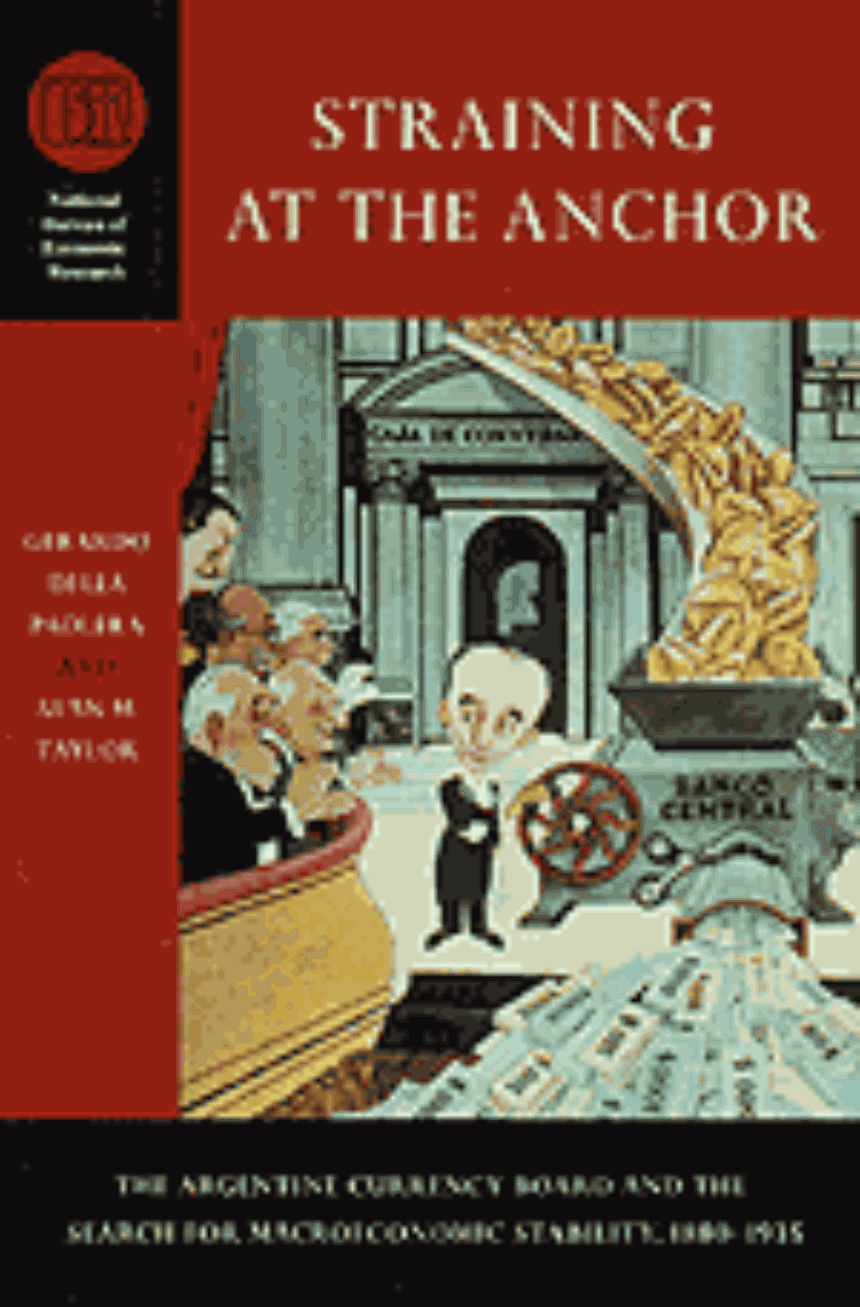Straining at the Anchor
The Argentine Currency Board and the Search for Macroeconomic Stability, 1880-1935
9780226645582
Straining at the Anchor
The Argentine Currency Board and the Search for Macroeconomic Stability, 1880-1935
The "Argentine disappointment"—why Argentina persistently failed to achieve sustained economic stability during the twentieth century—is an issue that has mystified scholars for decades. In Straining the Anchor, Gerardo della Paolera and Alan M. Taylor provide many of the missing links that help explain this important historical episode. Written chronologically, this book follows the various fluctuations of the Argentine economy from its postrevolutionary volatility to a period of unprecedented prosperity to a dramatic decline from which the country has never fully recovered. The authors examine in depth the solutions that Argentina has tried to implement such as the Caja de Conversión, the nation’s first currency board which favored a strict gold-standard monetary regime, the forerunner of the convertibility plan the nation has recently adopted.
With many countries now using—or seriously contemplating—monetary arrangements similar to Argentina’s, this important and persuasive study maps out one of history’s most interesting monetary experiments to show what works and what doesn’t.
With many countries now using—or seriously contemplating—monetary arrangements similar to Argentina’s, this important and persuasive study maps out one of history’s most interesting monetary experiments to show what works and what doesn’t.
298 pages | 15 halftones, 29 line drawings, 39 tables | 6 x 9 | © 2001
National Bureau of Economic Research Series on Long-Term Factors in Economic Development
Economics and Business: Economics--History
History: Latin American History
Reviews
Table of Contents
Acknowledgments
Part One: The Historical and Methodological Context
1. Introduction
2. Anchors Aweigh: The Drift Toward Crisis in the 1880s
Part Two: The Baring Crisis and Its Origins
3. A Monetary and Financial Wreck: The Baring Crisis, 1890-91
4. Collision Course: Macroeconomic Policies and the Crash
Part Three: The Making of the Belle époque
5. Relaunching the Gold Standard: From Monetary "Anemia" to "Plethora" and the Political Economy of Resumption, 1891-99
6. Calm Before a Storm: The Gold Standard During the Belle époque, 1899-1914
Part Four: The Travails of the Interwar Years
7. Distress Signals: Financial Fragility in the Interwar Period
8. Bailing Out: Internal versus External Convertibility
9. Steering Through the Great Depression: Institutions, Expectations, and the Change of Macroeconomic Regime
Part Five: Postscript
10. Postscript
Appendix 1. Histirical Statistics
Appendix 2. The Law of National Guaranteed Banks
Appendix 3. Money Supply Periodization, 1884-1913
Appendix 4. Money and Exchange Rates, 1884-1913
Appendix 5. Instituto Movilizador de Inversiones Bancarias
Appendix 6. Humor, Politics, and the Economy
References
Index
Part One: The Historical and Methodological Context
1. Introduction
2. Anchors Aweigh: The Drift Toward Crisis in the 1880s
Part Two: The Baring Crisis and Its Origins
3. A Monetary and Financial Wreck: The Baring Crisis, 1890-91
4. Collision Course: Macroeconomic Policies and the Crash
Part Three: The Making of the Belle époque
5. Relaunching the Gold Standard: From Monetary "Anemia" to "Plethora" and the Political Economy of Resumption, 1891-99
6. Calm Before a Storm: The Gold Standard During the Belle époque, 1899-1914
Part Four: The Travails of the Interwar Years
7. Distress Signals: Financial Fragility in the Interwar Period
8. Bailing Out: Internal versus External Convertibility
9. Steering Through the Great Depression: Institutions, Expectations, and the Change of Macroeconomic Regime
Part Five: Postscript
10. Postscript
Appendix 1. Histirical Statistics
Appendix 2. The Law of National Guaranteed Banks
Appendix 3. Money Supply Periodization, 1884-1913
Appendix 4. Money and Exchange Rates, 1884-1913
Appendix 5. Instituto Movilizador de Inversiones Bancarias
Appendix 6. Humor, Politics, and the Economy
References
Index
